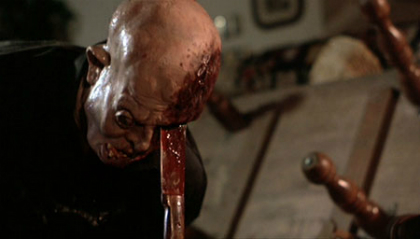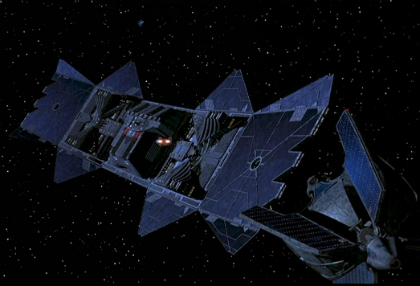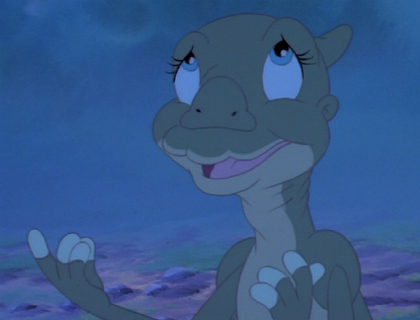The Five Best (and Five Worst) Ways to Handle a Fourth Film in a Franchise
One of the fundamentals of the movie business is the three-act structure as the foundation of storytelling, which more or less means that every movie must have a beginning, middle and end. The beginning sets the main character off on his or her task, the middle piles on more challenges, and the end features a reckoning that usually ends with the protagonist triumphant. The most obvious execution of this idea can be seen in each of the original three Star Wars movies, as Luke Skywalker spends each act on a different planet: Tatooine/DeathStar/Yavin 4 airspace, Hoth/Dagobah/Bespin, Tatooine/Endor/Death Star.
In a micro sense we’re taught in film school that each act can itself be broken into three acts, as can each individual scene; in the macro sense, one of the reasons we’re so obsessed with trilogies for cinematic properties is because they function as three-act structure writ large. Which is why, when a fourth film gets greenlit, things are thrown for a loop. Do you start a new trilogy? Are there any loose ends left to tie up? Where do we go following the neat closure that our three-act trilogy presumably left us with?
These have to be the questions on Steven Spielberg’s mind as he preps Jurassic Park 4. And based on prior big-screen tales that made it to the quadrilogy stage, we can certainly get a sense of what approaches do and don’t work.
Let us start with what not to do.
5. Find ways to keep the most popular actor around even if they make no sense (Saw IV, Alien Resurrection).
 |
| I am aware this is the Saw 5 poster, but the metaphor’s too good |
Once you’ve killed off a character, honor that decision. Suddenly revealing that he actually did a shit-ton more things in his last month of life than anyone with cancer could possibly do feels (and is) desperate. Tobin Bell was the best thing about the Saw series, so I understand the choice – but he was never meant to last beyond three movies, and nor was Ripley beyond Alien 3.
Michael Crichton already ignored this rule in his books by bringing back Ian Malcolm for The Lost World; since Malcolm never died in the movies, the only popular people worth resurrecting would be Samuel L. Jackson and Wayne Knight’s characters from the first film. Hey, at least cloning is already established as a plot point.
4. Introduce the main character’s kid/relative/protegee, with the unsubtle implication that the younger actor might take over the franchise if the aging star becomes more expensive (Indiana Jones and the Kingdom of the Crystal Skull, Live Free or Die Hard, Highlander: Endgame, Texas Chainsaw Massacre: The Next Generation).
 |
Thankfully, this is not an issue in Jurassic Park. Sam Neill comes cheap.
3. Lie, in a manner nobody even pretends to believe (Friday the 13th: The Final Chapter).
 |
| It’s only a flesh wound. |
Did anybody, even at the time, genuinely suspect that Jason Voorhees was not coming back? The Friday the 13th films are the only franchise to have two separate installments that both claim to be final (Jason Goes to Hell: the Final Friday being the other one) and are both blatantly deceptive in that regard.
2. Tell an origin story nobody really wanted to know (Psycho IV: The Beginning, Star Wars Episode I: The Phantom Menace, X-Men Origins: Wolverine).
 |
| “Meesa still more famous than yousa!” |
Do you really need to know why Norman Bates is crazy, or did you already deduce that he had a fucked-up relationship with his mother? You did want to know Darth Vader’s origin, but how badly were you burning to hear the tale of how young Anakin ended the tax blockade of a planet inhabited by mentally challenged underwater bunny-rabbits? Some information was already there in the source material, and spelling it out actually makes the characters less interesting. Which is to say that I don’t need to see young John Hammond playing with wooden stegosauruses, or understand the prenatal memories of a cloned T-rex.
1. If your franchise isn’t science fiction, take it into outer space anyway (Hellraiser: Bloodline, Leprechaun 4 in Space).
 |
Tired of having your killing-machine character slaughter people in small towns and or back alleys? Take ’em to sci-fi sets instead! The fourth film in the Hellraiser franchise got more ambitious than the prior installment’s lame nightclub setting, spanning several time periods and including a space station that represented the puzzle box writ large, but it only reminded us of the “Jews in Space” bit at the end of Mel Brooks’ History of the World Part I. By the time Warwick Davis’ leprechaun showed up on an alien planet, however, it was an indication that his movie series wasn’t remotely concerned with continuity, logic, or any semblance of believability. Spielberg, if you even think about going this way, just remember you have to do better than the recent Doctor Who episode, “Dinosaurs on a Spaceship.”
And now, the best ways…
5. Go back to what worked (Halloween 4, Fast and Furious).
 |
Sometimes, franchise producers get really stupid, and decide that what was appealing about their original property was neither the story nor the characters, but the general concept. Often, this is also them attempting to prove a point about stars being replaceable. So when Halloween stopped being about Michael Myers in the third movie, and the Fast/Furious series suddenly went to Japan and forgot about Paul Walker completely, the ensuing movies – whatever their merits – started with strikes against them because they weren’t the continuations fans had hoped for. But the studios wised up, and both part-fours saw the return of the favorite characters and formulas. “Dinosaurs in a broken theme park on an island” is a simple enough template to not screw up, one would think.
4. Whatever the fuck they did in The Land Before Time IV (The Land Before Time IV).
 |
| “You are tearrring me APAARRRRT Dino-Lisa!” |
I’m not watching to find out. But something’s working for them, because there are thirteen movies in the series. Were you aware of this? That’s more than Jason Voorhees has, even if you include the remake and Freddy vs. Jason.
3. The Stallone Rule of Four: skip directly to the good parts, and amp them up (Rocky IV, Rambo).
 |
The first Rocky and Rambo films were serious movies about outsiders struggling to fit in and find their place in the world, but by the time Sylvester Stallone’s alter-egos were single-handedly fighting Soviets in Afghanistan, or staring down Hulk Hogan and Mr. T, they had become cartoons. So Rocky IV gives us a robot, a Soviet steroid machine and a gratuitous death, along with some classic ’80s driving-and-crying montages. Rambo is basically an excuse to have evil Asians explode into bloody showers of guts. The point Spielberg can take away here is that we don’t need a lengthy set-up to get people onto the dinosaur island. Start right there, and have the first person get eaten immediately.
2. If you can’t think of anything else, add 3-D (Resident Evil: Afterlife, Underworld: Evolution).
 |
When nobody cares about your plot, but is just coming to see a tightly clad female warrior (played by your wife) kicking the crap out of monsters, the only way to really change it up is to give them a tightly clad female warrior (played by your wife) kicking the crap out of monsters…in 3D!!! Best big-budget honeymoon videos ever. JP4 will indeed be in 3D, but Kate Capshaw may not be in ass-kicking shape these days.
1. Figure out what part of your audience hasn’t been served yet, and give them what they want (Star Trek IV: The Voyage Home, A Nightmare on Elm Street 4: The Dream Master).
 |
While most Trekkers love the ideas of science fiction and the action-adventure elements of the old show, there has always been a non-insignificant section of fandom that looks forward to space hippies, Spock losing his brain, and Shatner going crazy with the hand gestures and overacting. Such fans had to grab individual moments where they could in the first three movies (“KHAAAAAAAN!”) but it wasn’t until the fourth that the lighter side of Starfleet got an entire nuclear-wessel-powered movie, and Spock learned how to swear. Likewise, in taking over the Freddy Krueger franchise, Renny Harlin realized that the audience was rooting more for Freddy than his victims, and played to that, making Freddy a callous, carefree quipper in the best Bond/Schwarzenegger tradition.
Has any part of the Jurassic Park audience not been served yet? It would seem to me that only a true-to-the-first-book reboot would accomplish that feat, as only book loyalists were vocally disappointed by the first film. Perhaps the other great achievement of Nightmare 4 and Trek IV should be observed more: they don’t take themselves too seriously.
